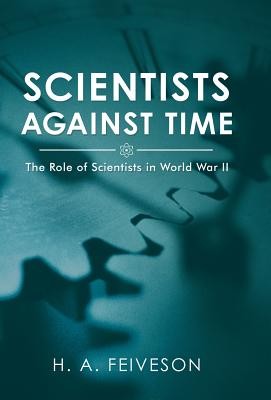
- We will send in 10–14 business days.
- Author: H a Feiveson
- Publisher: Archway Publishing
- ISBN-10: 1480854786
- ISBN-13: 9781480854789
- Format: 14 x 21.6 x 1.6 cm, hardcover
- Language: English
- SAVE -10% with code: EXTRA
Reviews
Description
In early 1942, the fate of the Allies appeared dire.
Germany had conquered most of Western Europe, and its armies were deep into Russia. Japan had overrun Manchuria, the Philippines, and the Dutch East Indies, had conquered large swathes of China, and had destroyed much of the US battle fleet at Pearl Harbor. But the tide of World War II turned dramatically in favor of the Allies, and in this, Allied scientists played a critical role.
The chapters covered in this book include an Overview summary of the entire war, the Battle of Britain, the Battle of the Atlantic against the German U-boats, the battle for command of the air, the Allied breaking of the German Enigma cipher, D-Day and the Allied invasion of Europe, and the Manhattan Project to develop an atomic bomb.
Harold Feiveson is a deep student of history, a masterful story teller and one of the pioneers in the global cooperative effort to stop the spread of nuclear weapons. This book provides a new, integrated overview of the remarkable technical achievements by the U.S. and British scientists who helped turn the tide of World War II. Although the war seemed endless to the participants, the number of world-shaping developments that occurred during the six years after the worlds industrialized countries committed themselves to total war is both remarkable and terrifying. The final breakthrough, nuclear weapons, led to a post-war nuclear-arms race whose dangerous legacy of destructive potential we are still struggling with today.
-Frank von Hippel, Professor of Public andInternational Affairs emeritus, Princeton University
An authoritative introduction to what Winston Churchill called the wizard war. Feivesons examination of the crucial role played by science and technology in World War II will appeal to both specialists and military history buffs.
-Colonel Paul L Miles, U.S. Army, (Retired), former lecturer in history, Princeton University.
EXTRA 10 % discount with code: EXTRA
The promotion ends in 19d.00:41:34
The discount code is valid when purchasing from 10 €. Discounts do not stack.
- Author: H a Feiveson
- Publisher: Archway Publishing
- ISBN-10: 1480854786
- ISBN-13: 9781480854789
- Format: 14 x 21.6 x 1.6 cm, hardcover
- Language: English English
In early 1942, the fate of the Allies appeared dire.
Germany had conquered most of Western Europe, and its armies were deep into Russia. Japan had overrun Manchuria, the Philippines, and the Dutch East Indies, had conquered large swathes of China, and had destroyed much of the US battle fleet at Pearl Harbor. But the tide of World War II turned dramatically in favor of the Allies, and in this, Allied scientists played a critical role.
The chapters covered in this book include an Overview summary of the entire war, the Battle of Britain, the Battle of the Atlantic against the German U-boats, the battle for command of the air, the Allied breaking of the German Enigma cipher, D-Day and the Allied invasion of Europe, and the Manhattan Project to develop an atomic bomb.
Harold Feiveson is a deep student of history, a masterful story teller and one of the pioneers in the global cooperative effort to stop the spread of nuclear weapons. This book provides a new, integrated overview of the remarkable technical achievements by the U.S. and British scientists who helped turn the tide of World War II. Although the war seemed endless to the participants, the number of world-shaping developments that occurred during the six years after the worlds industrialized countries committed themselves to total war is both remarkable and terrifying. The final breakthrough, nuclear weapons, led to a post-war nuclear-arms race whose dangerous legacy of destructive potential we are still struggling with today.
-Frank von Hippel, Professor of Public andInternational Affairs emeritus, Princeton University
An authoritative introduction to what Winston Churchill called the wizard war. Feivesons examination of the crucial role played by science and technology in World War II will appeal to both specialists and military history buffs.
-Colonel Paul L Miles, U.S. Army, (Retired), former lecturer in history, Princeton University.


Reviews